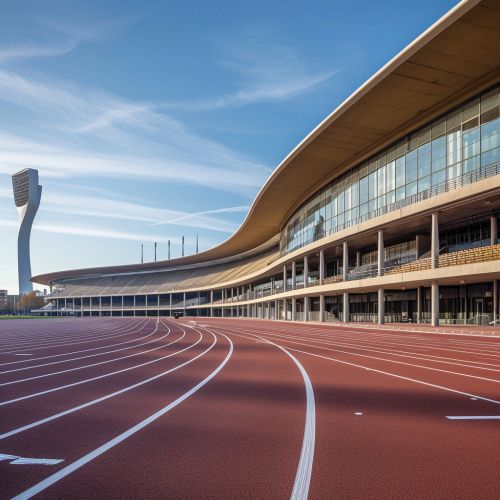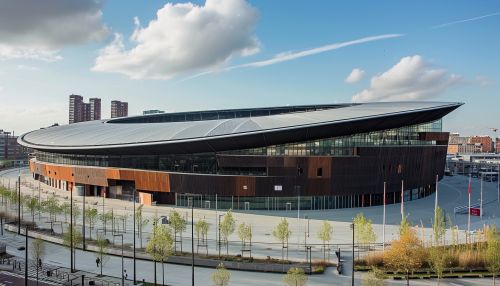Olympic Stadium (Amsterdam)
Overview
The Olympic Stadium in Amsterdam, Netherlands, is a multi-purpose stadium that was originally built for the 1928 Summer Olympics. The stadium is part of the larger Olympic Area, which also includes other sports facilities and infrastructure. The Olympic Stadium is a significant example of 20th-century architecture in the Netherlands and is a designated national monument.


History
The Olympic Stadium was designed by Dutch architect Jan Wils, a prominent figure in the Amsterdam School architectural style. The stadium was officially opened on May 17, 1928, ahead of the Summer Olympics. The stadium was the central venue for the Olympics, hosting the opening and closing ceremonies, track and field events, equestrian jumping, and some football matches.
Architecture
The stadium's design is a notable example of the Amsterdam School style, characterized by its use of brickwork, complex shapes, and decorative elements. The stadium's most distinctive feature is the Marathon Tower, which was used to emit a continuous Olympic Flame during the games.
Usage
Over the years, the Olympic Stadium has been used for a variety of sports events, including football matches, athletics competitions, and speed skating. It has also been used for concerts and other cultural events.
Renovation
The stadium underwent a significant renovation in the late 1990s and early 2000s, which preserved its historical features while updating its facilities to meet modern standards. The renovation was overseen by architect André van Stigt, who specializes in the renovation of historic buildings.
Legacy
The Olympic Stadium continues to play a significant role in Dutch sports and culture. It is regularly used for national and international sports events, and its historical and architectural significance make it a popular tourist attraction.
